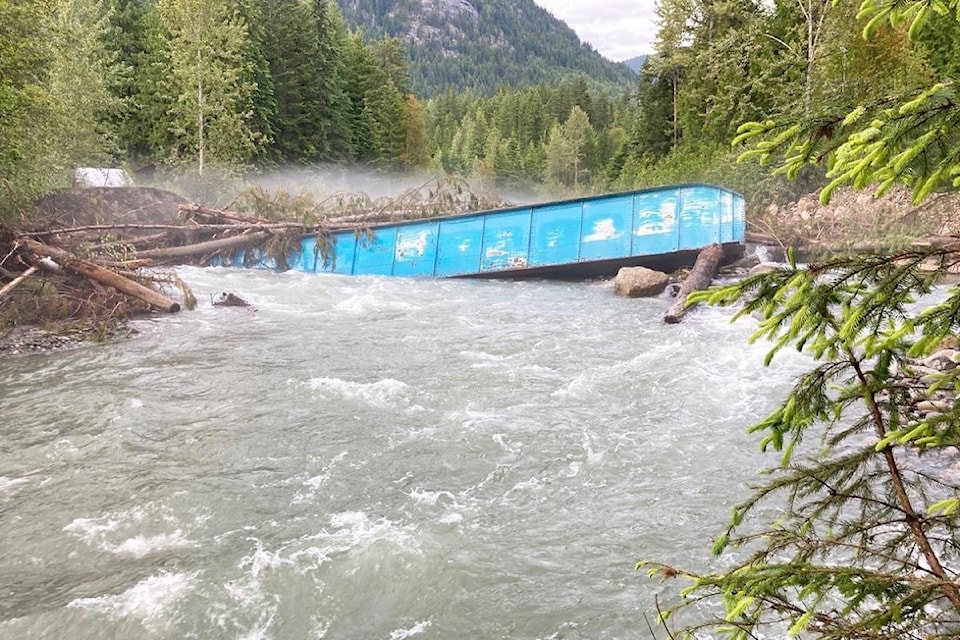A federal fisheries official says they’re reviewing plans to remove a bridge from Caribou Creek near Burton, while keeping an eye on the upcoming migration of kokanee salmon up the stream.
By John Boivin
Local Journalism Reporter
A private bridge across the creek was swept off its moorings by flooding as a result of the massive thunderstorm that moved through the area on May 31.
The bridge now lies in the water, and a logjam is building up behind it. Federal and provincial environment authorities investigated the situation in June, and the Department of Fisheries and Ocean’s lead in the area says he’s confident work will be completed in appropriate time.
“Currently there is no compliance or enforcement actions being undertaken by Fisheries and Oceans Canada,” says Brian Levitt, the federal fishery officer and field supervisor for the region.
“Our fish and fish habitat Pprotection Program is currently reviewing a project submission for the removal of the bridge, and… [staff] advised they’d be reviewing it in the near future to determine if there’s any fish or fish habitat concerns involved with the removal of the bridge, and determine if an authorization would be required or not.”
An authorization is required if someone is going to or possibly will cause damage or destruction to fish habitat while working around water. While the bridge washout was an act of god, explained Levitt, removing such a large structure could require removing shoreline vegetation or entering the creek bed to use heavy equipment, etc.
That can only be done with prior approval from Fisheries and Oceans Canada.
Staff will have to get moving to approve the plans, however, as time is running out for the project to be done in a way to limit impact on migrating fish. Under the terms of the Fisheries Act, work has to be done in the Kootenay region in-stream works timing window, which is from July 16 to Aug. 31, says Levitt.
“That’s to enable the migration of kokanee. It’s one of the considerations of the in-stream works window,” he says.
The bridge owner also needs to secure equipment and get appropriate approvals from the province. Levitt says he understands the province is working closely with the landowner. Provincial officials did not respond to calls for comment.
The deadline is coming up quickly, but Levitt says if the owner can’t get the permissions in time, there is a chance the work can go ahead after Aug. 31.
“There’s always ways to mitigate those extra risks. Let’s say if it was to run into Sept. 10-15, there may be increased requirements for the people conducting the works to ensure that the work has little or no impact.”
Levitt says following any work, fisheries officers will attend the scene for a follow-up inspection to ensure there was no excess or unapproved damage to the habitat.
Meanwhile, the water is low on the creek, and the logjam behind the fallen bridge has grown since the collapse on June 1. But Levitt says fish are adept at finding their way to their spawning beds, even with new obstacles in front of them.
— From the Valley Voice
